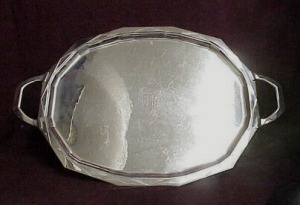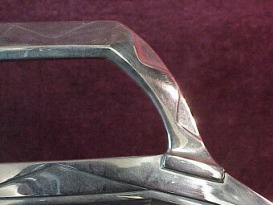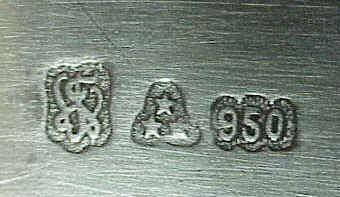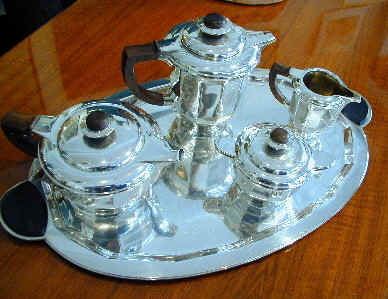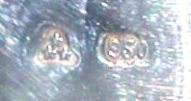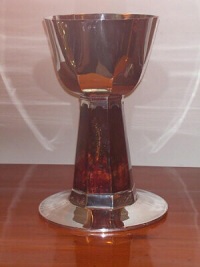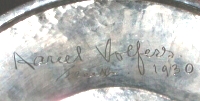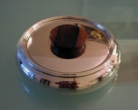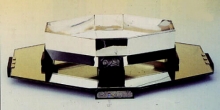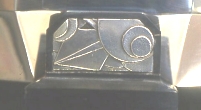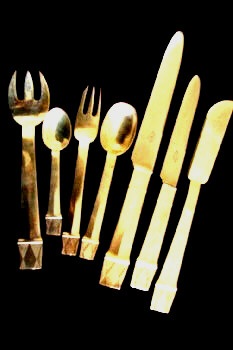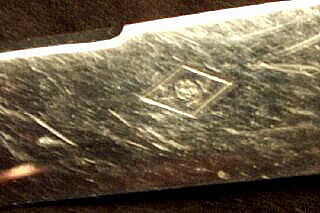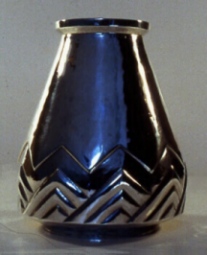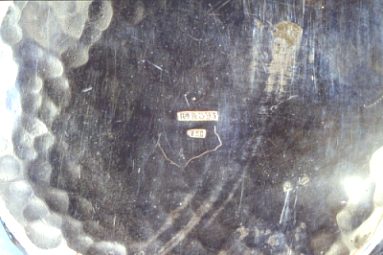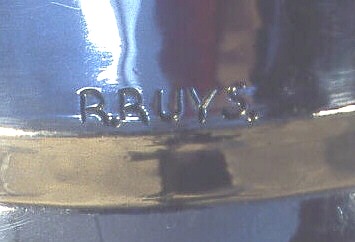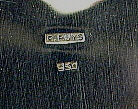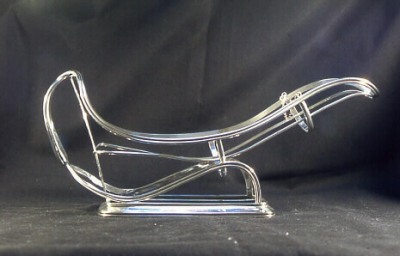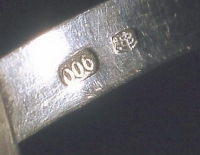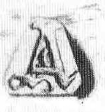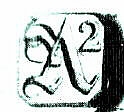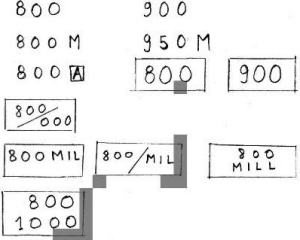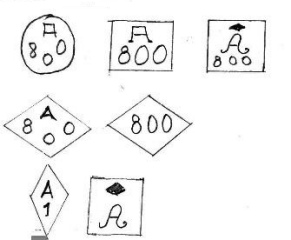(click on photos to enlarge image)
BELGIAN ART DECO SILVER
Belgium, a small country situated between France, The
Netherlands, and Germany, is known worldwide for its diversity
of languages, cultures and the quality of its food and
restaurants.
Yearlong fights between Flemish people and Walloons (which
happen mostly for political reasons and with curious
consequences) made me feel like a foreigner in my own country.
Because my mother tongue was French, I was not allowed to go to
the public school in the Flemish village where I lived!
French or English people traveling in our country sometimes lose
their way because the name of one city can take different forms
according to the region they are crossing. How can you know you
are reaching Lille in the North of France, when it is indicated
‘Rijssel’ on the highway signs near Ghent?
Fortunately, we make and eat the best French-fries (at the
origin, they are really Belgian), the best ‘Croquettes aux
Crevettes’, the best mussels, the best chocolates, and the
greatest variety of beers, etc., etc., etc.….
But, we have still more interesting things for you to discover.
For centuries, Belgium has been rich in land, climate,
agriculture and natural resources and is at the crossroads of
Europe.
As a consequence, we developed important manufacturing centers
with a large variety of artistic creativity in painting,
tapestry, sculpture, glassware (Val St. Lambert) and silverware.
We cultivated the richness of a variety of cultures. As a
specialist and teacher in Belgian and European silver, I have
had the opportunity to compare the artistic expressions of
different countries, and I would like to allow you to discover
the richness of our small country’s creativity during the Art
Deco Period of 1920 -1942.
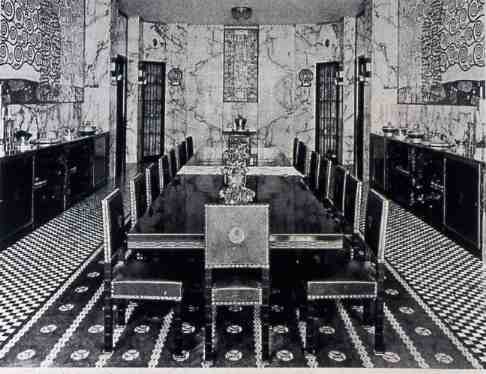 |
Hotel Stocklet – mansion designed by Joseff
Hoffmann
|
The construction of the Hotel Stocklet in Brussels by the
Austrian Josef Hoffmann (1905-11) was a definitive turning point
in the decline of floral or curvilinear Art Nouveau and the
introduction of austere linear and geometric forms.
The geometric style of Art Deco is related to the abstract and
cubist movements in painting and is probably partially a
consequence of the first world war.
I read a few interesting lines that said more or less, It is
striking to see that when man is ‘questioning ‘ his relationship
to ‘Nature’ or to ‘Creation’, he gives more importance to the
‘Invisible’ than to the ‘visible’ and the artist then elects to
express himself through ‘Abstract Art’…….
Two main centers of style influenced European Art Deco: The
French Art Deco (The Architect Le Corbusier and Jean Puifrocat’s
plastic translation of numeric calculations and geometric rigor)
and the Bauhaus in Germany.
In Belgium, we also had a few unique interpretations of Art Deco
-coming from Norway, inspired by African Art, and also unique
personal traditions of a few designers. I would like to give you
an appreciation of some Art Deco objects of which I have had the
opportunity to handle and sell to collectors and museums.
Wolfers Frères Workshop and retailers
First, let me tell you more about one of the best-known
Belgian silversmiths: Wolfers.
The Wolfers family is a ‘dynasty’ of silversmiths. In the 20th
century, Philippe Wolfers was the chief silversmith and jeweler
during the Belgian Art Nouveau period. He was the designer for
the Brussels Workshop, ' Wolfers’ Frères,’ and also created his
personal workshop in La Hulpe (South of Brussels) with a
selected crew of artists and craftsmen. This workshop was
situated in a house designed by Paul Hankar, one Belgian's Art
Nouveau architects. There he created his unique pieces of Art
Nouveau silverware, sculpture, and jewelry.
International Exhibitions encouraged creativity and presented
participants to an international public. Philippe Wolfers was
present in 1925 at the ‘Exposition Internationale des Arts
Decoratifs et Industriels Modernes’ which gave the name to the
‘Art Deco’ Movement and Period. In the Belgian Pavilion, he
presented what would be his last striking design,' The
Gioconda,' created in collaboration with other designers of the
Wolfers Frères workshop.
 |
Gioconda tea and coffee set
|
This was a 'ten-sided' model which incorporated geometric motifs,
mostly triangular in form. This design is similar to the French
geometric style - plain undecorated angular planes.
This ‘Gioconda’ pattern was also developed and produced in
glassware and earthenware
'Ten sided’ design Tray - Gioconda - Wolfers Frères
|
Detail of the handle, geometric ornamentation
|
How do we recognize Wolfers’ marks?
For Wolfers Frères Workshop it is mostly a triangle with 3 stars.
and the silver standard
The 'assay' mark (silver standard) can be presented in different
forms starting from 800/1000 to 950/1000
Hallmark system of the Gioconda Service
Hallmark Wolfers frères Workshop with the three stars in
a lobe triangle, Silver standard: 950/1000
On this Gioconda model the triangle is a lobed one
|
Marks of Wolfers Frères workshop and Silver Standard
before 1942 (833/1000)
|
Initials F W for Wolfers Frères design
When the object is a really particular one we'll find
another Wolfers makers' mark or designer's mark such as
the special entwined initials 'FW' for 'Wolfers Frères'
Workshop'
|
A simpler design that was wide spread
is the ‘Jade‘ Model, a 16 sided shape (seen in this this tea and
coffee service as well as quite "sober" flatware designs).
Service 'Jade' 1930-35 Wolfers Frères Workshop -
Brussels
|
Items from Wolfers Frères Workshop
productions were handmade. Later on they were also mechanically
produced
Philippe Wolfers died in 1929, Marcel Wolfers followed as the
designer and director of the workshop. One of his specialties
was lacquer work developed after the Chinese ‘Sung’ lacquer
technique and his encounter with the French lacquer master Jean
Dunand.
Chalice-Marks Wolfers Frères and silver standard
950/1000
|
Chalice with lacquer work - 1930 Marcel Wolfers -
Brussels
|
Chalice : signature Marcel Wolfers
|
The Workshop also produced the
creations of an interesting designer, ‘Dom Martin,’ a priest who
was also a silversmith, from the abbey of Keizersberg.
He crafted fine quality religious items with visible hammering
and also collaborated with Marcel Wolfers who lacquered some of
his objects. This religious Art Deco silversmithing coincided
with a period of religious (Roman- Catholic) revival -Rerum
Novarum 1891/1931- and the construction of the huge Basilica
of Koekelberg in Brussels.
For the celebration of their vows, priests often received a
unique religious object, created and crafted by personal
commission.
Workshop Delheid Frères
Delheid Frères” is the second best known silver workshop
in Brussels. They were the largest producers of sterling silver
flatware in Belgium (in sterling silver only).
Delheid Frères were not retailers, their silver production was
sold in the Belgian Jewelry and silver shops .
Very early on, this workshop adapted to modernity and used the
press to create silver wares.
The very sober bonbonnière (below left) is one example of
the adaptation of a decorative style to modern mechanization (adaptation
of applied arts to mechanization).
They also made interesting objects of a higher artistic quality,
often combinations of sterling silver with rare woods (mostly
from the Belgian Congo), such as the center piece also called
‘Jardinière’ (below center and right), which combines the
simplicity of faceted silver with black ebony feet, adorned with
the application of silver decorated with intricate geometric
forms.
Bonbonnière-Sweet meat dish Engine Turned Delheid,
Brussels, 1930-35
|
Jardinière - Geometric panels on black ebony feet,
Delheid Frères
|
Delheid Jardinière: Detail of the Geometric
ornamentation of the feet
|
Delheid Frères maker’s mark
Delheid Frères maker’s mark: D crowned with a serpent, (snake).
Sometimes you will find the maker’s mark upside down.
Workshop and Retailer Altenloh
The dealers' shop situated at 'Place Royale' near the
Royal Palace attracted the aristocracy and international
clients and was the silversmith for the Royal Family.
The shop handled its own production as well as foreign
silverware and jewelry such as Lalique, WMF,and Asprey.
The style of Robert Altenloh's Art Deco silver was more
influenced by Danish or Swedish silver. We can see
similarities between the design of this tea caddie or
biscuits box and some of Erik Fleming's items ( Stepped
pyramidal body). |
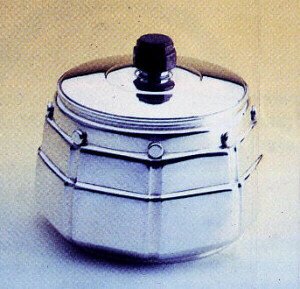 |
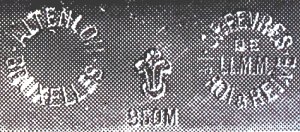 |
Altenloh makers’ mark: quite a beautiful one, with ‘ 2
feathers and a star’ and the 950M. This silver content
was quite a high one for our country. Sometimes, next to
those two marks you’ll find engraved in a circle (ALTENLOH
BRUXELLES) and (ORFEVRES de LLMM Roi Reine). On some
objects you might encounter only the maker’s mark (Two
feathers) |
Workshop Lemaire et de Vernissy
A Internet contact sent me a picture of a really beautiful
and rather special Art Deco model of flatware which I had never
seen before, with a special geometric form.
They worked mainly as a workshop not as a retailer. Edmond de
Vernissy was of French origin; he studied at the Ecole des
Beaux-Arts and the Ecole des Arts Decoratifs in
Paris.
As an interesting consequence, their maker's mark is presented
in a lozenge form like those of French silversmiths: Two letters
(L and a V) with a flower in the middle of the two initials.
Art Deco flatware, Lemaire et de Vernissy
|
Maker’s mark de Vernissy in a lozenge form
|
An important exhibition took place in Belgium, in Antwerp, in
1930. It was called Exposition Internationale pour les
colonies et l’art Flamand Trad (International exhibition for
the Colonies and Flemish art).
Belgium had ‘colonies’ in Africa. In fact, what is now called
the 'Republic of Congo' was one of our King Leopold II ‘s
conquests in the second part of the 19th century. Nowadays, his
attitude is contested at a humanitarian and ecological level.
Following his command, massive numbers of elephants were killed
and their tusks were used in the decorative arts, silverware and
sculptures.
Other important influences on the Art Deco movement were African
Art and music (Jazz).
Raymond Ruys Workshop and retailer
Now we shall discover the superb interpretations of a
Silversmith-jeweler in Antwerp whose house still exists and is a
beautiful and interesting example of Art Nouveau architecture.
The designer, Raymond Ruys, adapted the form of African seats,
drums, vases, etc., to silver hollowware creating unique,
original items. These objects are also special for their visible
hammering, from which similarities can be drawn to the work of
the French silversmith Jean Despres.
That visible ‘martelé’ look is really uncommon for Belgian
silver at the Art Deco Period, but there is still so much to
discover!
Raymond Ruys - Antwerp: Art Deco vase, Influence of
African Art
|
Raymond Ruys 'Art Deco Vase Martelé'
Hammered crafting
|
During the same Art Deco period, Raymond Ruys refreshed
(or ‘renewed ‘) a very classical design for dishes and
plates' - from the plain ‘lobed contours’ with six
‘rounded scallops ’ to a four scalloped ’ design with V
shaped indentations underlined by a vigorous rattail -
(right) Raymond Ruys Art Deco interpretation of a
classical pattern of dishes
|
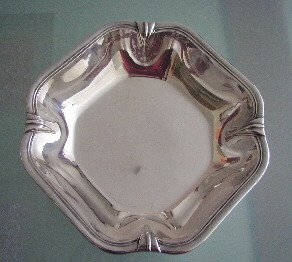 |
The makers mark
A letter R in a larger letter R for Raymond Ruys. We can also
find the designer’s signature: R.Ruys engraved on the item (In
the same way as the signature of Jean E. Puiforcat on his
personal creations).
Raymond Ruys signature
|
Raymond Ruys maker's mark
|
Ghent
As many as twelve city’s silversmiths trained at ‘St.
Lucas’ school for Decorative arts. Their production was mostly
ecclesiastical; secular silver was manufactured on a limited
scale.
Bourdon Frères retailers and workshop
Bourdon Frères was located near the Episcopal palace, and
Bourdon became the representative for Wolfers Frères. The
introduction of Art Deco style was due to Armand A.M.J. Bourdon,
and at the end of the thirties, Bourdon manufactured a number of
chalices in modernistic style, which brought success at the
Paris exhibition in 1937.
A rare example of silver is this rather sober and simple object,
a ‘decanting’ or ‘wine bottle’ basket. The very simple lines and
pure form might be influenced by Dutch ‘ Nieuwe Zakelijkheid’ or
Functionalism, an abstract and individual style in which form
and ornament had become indistinguishable from one another.
Bourdon Ghent ‘Functionalist’ Wine Bottle basket
|
Bourdon Ghent maker's mark:
letter B and an anchor
|
More about the Art deco Style in Belgium
During the Art Deco period, clients mostly ordered and bought
tea and coffee services, flatware, plates and hollowware, and
sport trophies.
We discovered that those Art Deco creations were not so
successful on a commercial basis. The public and clients before
the second world War were rather classical and preferred to
order items in the Neo-Classical revival style, so lots of items
did not sell at all and we found them still on display in shops’
cupboards in the 1950’s ,60’s, and 70’s.
This was probably also a consequence of the economical crisis of
the 1930’s.
Art Deco style silverware took a ‘second breath’ after the
1940’s and 50’s and was more in ‘vogue’ at that time. The
objects of that period follow the same line as before the war.
More to know about Belgian hallmarks, silver content,
silver standards and marks at that time
Our country's silversmiths had to fight hard against
competition and concurrence, mainly imports from foreign
countries.
In Germany, mechanized factories used a lower silver standard
and their products were also lower priced. France began
producing and promoting low-cost silverplated products from the
middle of the 19th century.
Then, Belgian silversmiths asked for greater freedom of trade as
to the silver content and also to get rid of the obligation of
having a registered maker’s mark.
As a consequence, we often find items, which are only punched
with the silver content mark and wear no maker’s mark at all.
We cannot speak of a legal assay mark, unless the one presented
in "Tardy":
a Gothic A with number 1 or 2 for 900/1000 or 800/1000
'Legal' 1st assay mark Belgium, 1869-1942
|
'Legal’ 2nd assay mark Belgium, 1869- 1942
|
Those unregistered silver content marks can have a great
diversity of form (see picture below). They were used
from 1869 to 1942.
We also find French products that were imported to our
country wearing the French silversmiths’ makers mark and a
Belgian silver content mark.
This is the reason for the difficulties in studying and
researching work from the period between 1868 to 1942.
Only experience and cross-references help to gather information
and certitudesN.B.
Post second world war Art Deco silver wears different marks.
The makers mark appears in a ‘barrel’ form and the silver
standard in an oval form with the letter A preceding the silver
standard. Those new legal mark’s form are compulsory and again
registered
Bookshelf if you would like to learn more
'Art Nouveau and Art Deco Silver’ Annelies Krekel
Aalberse - Harry N. Abrams, Inc,Publishers, New York. ISBN
0-8109-1892-7
‘Silver of a New Era’ International Highlights of Precious
Metalware from 1880 to 1940. ' ISBN 0-8109-1892-7
‘Art-Deco Zilver’ Sterckshof Studies 3 Provincial Museum
Sterckshof-Zilvercentrum Antwerpen-Deurne (out of print).
‘Orfèvrerie au Poinçon de Bruxelles’- Jacques
Vanwittenbergh - Catalog of the Exhibition organized by Société
Générale de Banque; Bruxelles 1979.
‘Les Wolfers’ Orfèvres, Bijoutiers Joaillers' - Walter
van Dievoet - Studia Bruxellae.
Photographs of Martine D'Haeseleer
Photographs of Delheid Jardinière and Altenloh ‘Biscuit’ Box
courtesy of
Zilvermuseum Sterckshof Provincie Antwerpen - Belgium
|
 ASSOCIATION OF SMALL COLLECTORS OF ANTIQUE SILVER
ASSOCIATION OF SMALL COLLECTORS OF ANTIQUE SILVER

